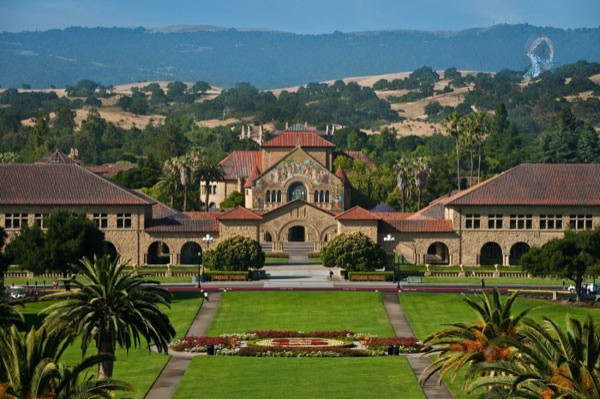Skip Rush Hour, Get Paid, Help The Environment -- Stanford's Commuter Plan

Stanford University is testing out the new program Congestion and Parking Relief Incentives, or Capri, to decrease traffic congestion by paying drivers to commute at off-peak hours.
In 2010, there were over 242 million registered motor vehicles on U.S. roads, according to data from the U.S. Department of Transportation Federal Highway Administration, and the number of vehicles has been steadily increasing since 1960, as has the distance driven each year. There does not seem to be any plateau in sight, so congestion could become an increasingly debilitating problem without changes to people's driving habits.
Traffic jams result in billions of gallons of gasoline being lost each year, adding millions of tons of greenhouse gases to the atmosphere, according to a Stanford report.
While many cities like London, Edinburgh and Singapore currently have congestion charges whereby drivers must pay a fee to enter high congestion areas, Capri represents a new approach at decreasing traffic jams by incentivizing changed driving behaviors. According to Capri, shifting commutes by as little as half an hour earlier or later can ease congestion at peak hours. Over 12,000 Stanford drivers are eligible for the program.
The project, funded by the U.S. Department of Transportation and headed up by Professor of Electrical Engineering and Computer Science Balaji Prabhakar, rewards regular commuters to the Stanford campus with credits when they enter or exit at designated off-peak hours during the week. The credits can then be used on the Capri website to win cash prizes ranging in value from $2 to $50, which are paid through the university's payroll.
You probably wouldn't jump out of bed early every day for 10 cents, but the raffle effect, where a small amount of money seems like a lot, is well-established, Prabhakar said, according to a Stanford report.
Each driver participating in Capri attaches a tag to their windshield that gets read by automatic scanners each time the car enters and leaves the campus. Each driver also gets to select a boost day during the week when they will receive triple points for off-peak travel.
Capri is currently focusing on shifting Stanford commute schedules away from congested peak time -- a win-win for commuters and for the environment, the program's website said.
Capri plans to expand into reducing parking congestion with a similar program next year.
According to a recent report by the New York Times, the Department of Transportation gave Stanford and Dr. Prabhakar a $3 million grant to pursue the Capri research, raising the possibility of a similar system one day being implemented on the nation's highways. Moreover, according to the article, the growing ubiquity of smartphones may even make windshield tags obsolete as the GPS functionality of phones could substitute on a larger scale.
We couldn't think about doing this kind of thing in the 20th century. With today's technology, it's feasible to install low-cost sensors on a wireless network and make use of new Internet technology, Prabhakar said. For example, we have a Facebook Connect function. You get a unique link to post on your wall. Every time someone clicks that and joins, you automatically get the credits.
The integration of social applications has proved crucial in early-stage use of Capri. The Capri program, which launched earlier in the year, has its origins in a study carried out by Stanford's Precourt Energy Efficiency Center in Bangalore India, where a similar program doubled the number of commuting employees arriving at a company's headquarters before 8 a.m.
So far, the program has been so successful that Stanford is considering continuing the program even after federal funding for it is exhausted.
© Copyright IBTimes 2024. All rights reserved.





















